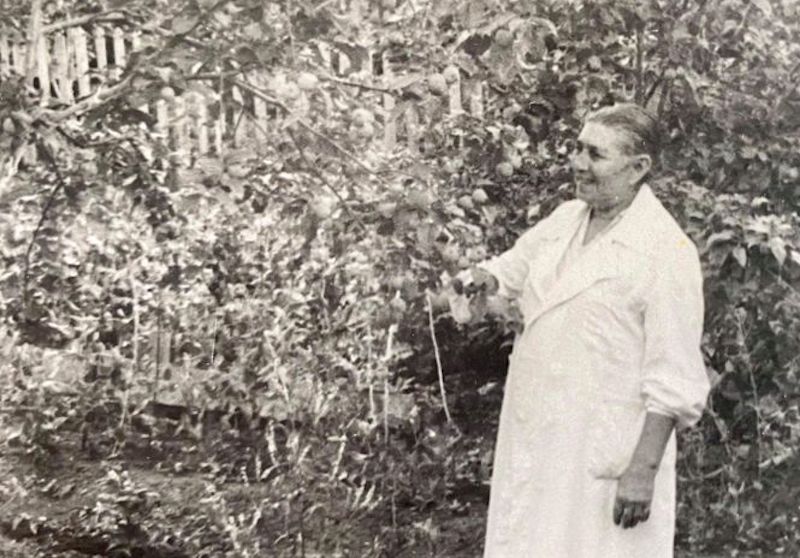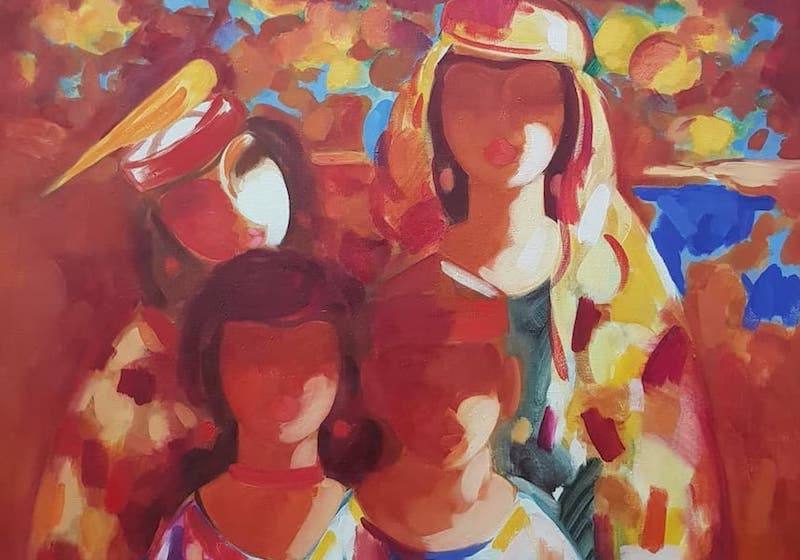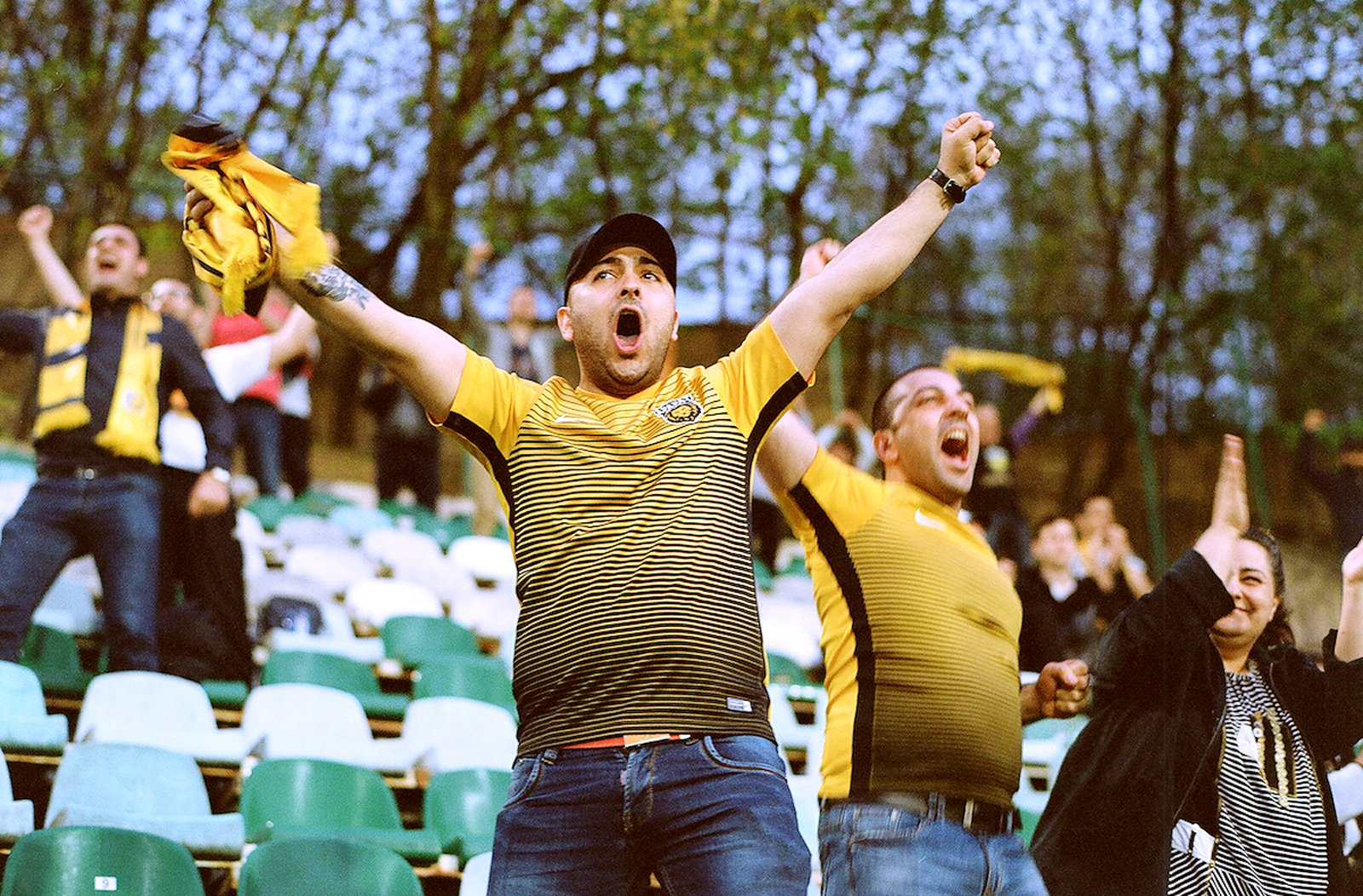Armenians of Calcutta: photographing a forgotten diaspora
The Indian city of Kolkata is the heart of Bengali culture and intellectualism, and was also once the capital of British India. But when photographer Alakananda Nag delved into the city’s history, she found that it was not British soldiers but Armenian merchants that had shaped much of Kolkata’s colonial-era development — and that their community still lingers among the streets.
Grand, double-blocked and multi-storeyed, The Queen’s Mansion building spreads its arms across Kolkata’s Mother Teresa Sarani. Style-wise, it draws much from the Edwardian baroque, popular at the time of its construction in 1911. Laurels embellish its pilasters, bold rustifications arch around corner windows and the domed rooftop pavilion. There is a touch of the Indo-Islamic delicacy in the lattices framing its rows of windows. With their missing glass panels, some of the windows stare out like dark, toothless mouths. Others with their snazzy, retrofitted sliding doors, iron grills, and AC units, tell a different story. Signs of remodelling, extensions, additions, subtractions and improvisations lie scattered across the building facade. The city’s famous swampy weather has eroded a recent coat of crème and gold over their wound marks. But none of this subdues the building’s splendour. It holds its chin high effortlessly, wearing the thumbprints of time with a knowing élan.
I am in what is, inarguably, the Indian city of Kolkata’s most popular district. Although recently renamed in memory of the Albanian-Indian nun who made the city her home, this boulevard remains “Park Street” for locals. It is easy to see why the area appears so often in travel guides: dotted with bars, restaurants, street eateries, boutiques, salons, and clubs, it glitters with endless, bustling activity. And then there are the buildings, Queen’s Mansion and the adjacent Stephen Court and Park Mansion, all imposing structures alike in age and form. Their gravitas defines the visual landscape of the neighbourhood. Yet, despite their prominence, few know that all three buildings weren’t erected by colonial British rulers, as most people assume, but by Kolkata’s own Armenian community.
Not many remember Johannes Carapiet Galstaun, who built Queen’s Mansion more than 100 years ago. The building is among the 350 structures he constructed across the city in the early 20th century. Born in Julfa, Iran, in 1859, Galstaun was — and continues to be — one of the wealthiest real estate tycoons Kolkata has ever known. His many hefty expenditures included a contribution of 20,000 rupees (roughly £3 million today) towards the making of Victoria Memorial Hall, a magnificent marble monument inspired by the Taj Mahal and built by the British in memory of Queen Victoria between 1906-21 in colonial Calcutta. A brisk 20-minute walk from the memorial, Queen’s Mansion was originally named Galstaun Mansion’ in honour of the mogul’s fame, fortune, and esteem. Then, in 1953, it was renamed to celebrate the coronation of Elizabeth II. The new name stuck. Almost no trace of Galstaun remains.
Photographer Alakananda Nag’s recent book, Armenians of Calcutta traces the forgotten lives of the community to which Galstaun belonged: generations of Armenians who lived in and shaped an Indian city that barely remembers them.
The result of a decade-long photo project, the book consists of photographs, texts, and rare archival materials. Embossed on its blood-red cover is a straightforward question: “Are Armenians after all the founders of Calcutta?” It’s a controversial suggestion in a city those in the West historically consider to be hanging from the coattails of the British, but it is a question that Nag has asked herself repeatedly in the course of the project.
Nag was born and grew up in the city. (This is why, like many locals, she refers to the metropolis as Calcutta — not Kolkata as it was renamed in 2001.) But, like most, she too had little knowledge about the Armenian community’s long roots in the area. She did, however, know the city’s Armenian Church of the Holy Nazareth. Probably the oldest church in Kolkata, the place of worship was originally built in 1688 and then rebuilt following a fire in 1724. Set against the chaotic bustle of the aptly-named Armenian Street in Burrabazar, one of Asia’s largest wholesale markets, it is a calm oasis of white marble. Set amidst a large complex bordered with trees, it appears to be adrift on a sea of tombstones. One grave harks back to 1630, a good 60 years before the city of Calcutta was formally established. The church marks the nerve centre of the area where the Armenians settled and set up their trade when they first arrived in the new city. Once a busy trade stop, the Armenian Wharf is a stone’s throw away; the Armenian College and Philanthropic Academy (ACPA) only a quick car ride.
Armenian merchants started trickling into the South Asian subcontinent as far back as the 11th century. By the time the British East India Company’s first ships docked in Gujarat in 1608, they had already made inroads into every powerful quarter in the area. They were regulars at Mughal courts; they had learnt local languages, and their trade connections covered almost all corners of present-day India.
Cannily, the newly-arrived British traders decided to keep India’s Armenian community close. Time and again, the British would seek Armenian support against their trading rivals (the Dutch, the Portuguese, and the French) and in negotiations with Mughal rulers. Local Armenians helped the British acquire the rights to collect tax from the three villages that eventually became Calcutta. In 1690, when an employee of the British India Trading Company, Job Charnock, formally “founded” the city, the Armenians were invited to come set up homes and businesses.


In less than 100 years, the British would seize control over all of India’s Bengal region, with Calcutta becoming the jewel in its crown. Once supreme, they became increasingly unwilling to share trading space — and thus profits — with the Armenians. Over time, they thus pushed the latter out of their merchant roles and into other fields: education, real estate, medicine, philanthropy.
As Nag dug into this seemingly closed chapter of history, she realised she wasn’t necessarily dredging up the past but looking through a window to the present. Kolkata’s Armenian community, though tiny and dwindling, evidently still has a beating heart. On the threshold of a career in documentary photography at the time, Nag was encouraged by many to reflect her interest in the community in her work. When I ask about the source of this interest, she pauses. “Perhaps it was a result of the invisibility of the Armenian community in the fabric of present-day Calcutta,” she says. “Unlike the numerous other groups of people who came to the city, stayed on, and made it their own, most don’t see, hear, or know much about the Armenians’ current life here.”
Oldest surviving photograph of the Armenian College and Philanthropic Academy (ACPA) rugby team, 1936
By the time her project began, the flourishing community of thousands that Nag had been reading about had trickled down to roughly a hundred. Among those Armenians who remained in Kolkata was Violet Smith, owner of Fairlawn Hotel — an unassuming gem buried in the city’s backpacking district that has hosted everyone, from Gunter Grass and Tom Stoppard to Ismail Merchant. Violet was the child of refugees who had fled the Armenian genocide of 1915 – 1917. They arrived in Kolkata in 1933, and by 1963, Smith was running Fairlawn on her own. “Her pearls, red lips, and perfectly-done hair stood out in contrast to the half-awake guests at breakfast. Even in her nineties, she came down every morning, looking better than anyone, talking to her guests and keeping the staff on their toes,” Nag writes in her book. Smith’s death in 2014 awakened Nag to the urgency of her project, and the very real possibility of losing the people whose stories she wanted to hear.
Marie and Saco, or the “Stephen siblings”, were the first people Nag photographed. Their father came to India from Julfa, and although initially successful, their business dwindled over time. Steadily, the family slipped from plentitude to paucity. As she began sharing their elaborate family albums, Marie reminisced about better times. She saw herself as a ‘staunch Armenian’, she told Nag, just as her brother considered himself an “unwavering Calcuttan”. Once she retired, she made a pilgrimage to the Mother See of Holy Etchmiadzin in Armenia. It was her first time. “I didn’t feel like coming back, it all seemed so familiar,” she told Nag. Why then, did she return? “Because this is home,” she said.


Eager to learn more, Nag tried to find ways to gain further access to the community. But it wasn’t easy. As a small, quietly fading group, the Armenians in the city kept to themselves. Nag spent months attending the church, visiting Catchick Paul Chater Home for the Elderly and the ACPA, hoping to make inroads, keeping her ear to the ground. For years all she did was try to listen. The people she eventually photographed took much effort to find and strike up an acquaintance with. Their stories trickled down to her sluggishly. Tales of the Armenian genocide, of escape, anguish, the peculiarities of being a stateless diaspora, the fear of obliteration, and the desperate attempts at holding on to an Armenian identity.
The need to make these stories public soon became apparent. Not only were these past and present struggles unfamiliar to most in the city, but a good part was also unknown to other Armenians in Kolkata and elsewhere. But even as she planned the book, Nag’s doubts mounted. As an “outsider”, she feared misrepresenting and speaking on behalf of a different community. As a photographer, she worried that the complexities of her interactions with her subjects evaded her images.
These concerns have arguably influenced the book’s structure. It opens with an image of Kolkata’s Armenian Street, exhibiting the demure gaze of an onlooker entering an unfamiliar milieu. Images of the Church of the Holy Nazareth, its choir, robes and rituals, framed portraits of Armenian stalwarts, and performances by students at the ACPA abound in the first few pages. It is only at the very end that the faces of those that Nag met and befriended start to emerge. Although Nag is quick to assert that “this is not a book of portraits”, it is these images that lend the book’s narrative its undeniable intensity. The objects which Nag’s subjects share — family albums, wedding photos, passports, documents, letters, clothes — supply some of the book’s most poignant moments. The photographer sets these personal items alongside objects she herself has unearthed: pages from the church’s register of baptism, in use since 1904, classical Armenian question papers handed in at Calcutta University in 1934, and the oldest surviving photograph of ACPA’s rugby team. Together, these artefacts unfurl a variegated tapestry of lives led by the members of Kolkata’s Armenian community. For a moment, they make readers nostalgic for a world, and a pas, they have never known.
It is perhaps this that has led dozens of readers to reach out to Nag, including many with no connection to Kolkata. In their messages, they often tell her how familiar the people and the places in the book look, how closely the pictures resemble their own family albums, their own community. Despite being rooted in a specific place, and a specific group of people, Armenians in Calcutta is also about something much broader: belonging, the impulse to hold on to one’s identity, and the gradually slipping reins of time. This is what allows it to transcend geography.
I ask Nag what she thinks people will take back from her book. “Hopefully not just what happened once,” she says smiling mildly, “but an impression of what remains. Because that is what I think this book is about, that which is left behind.”




